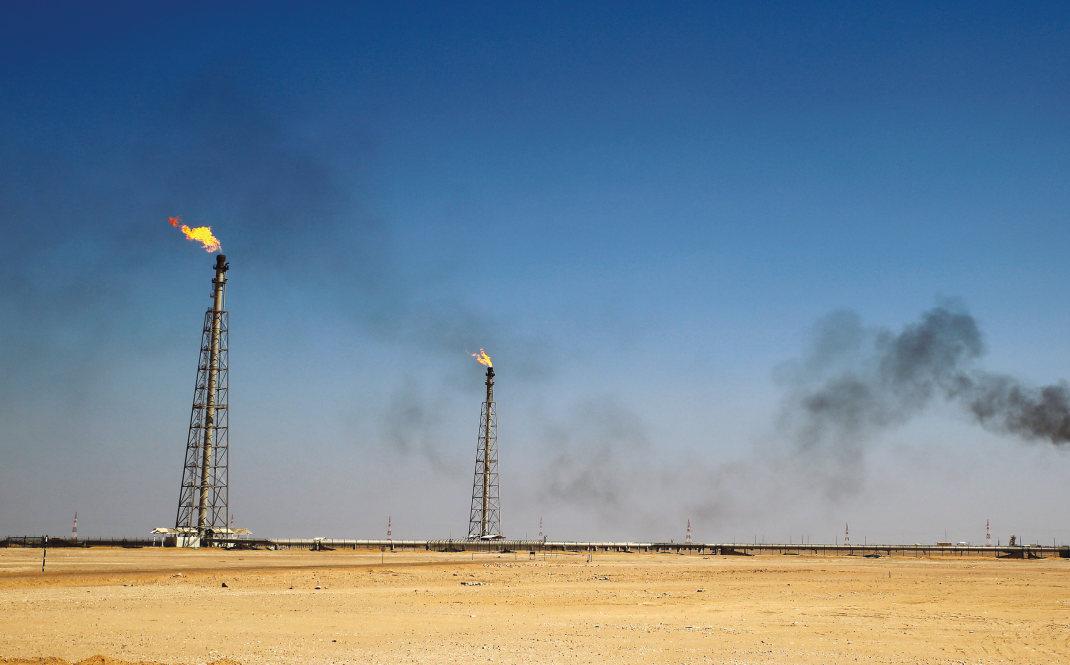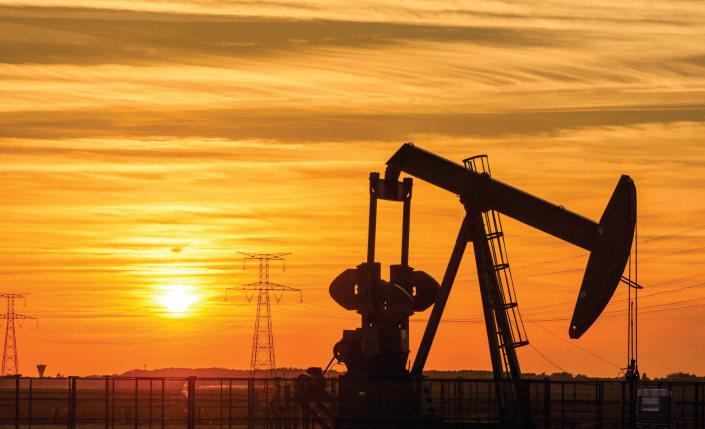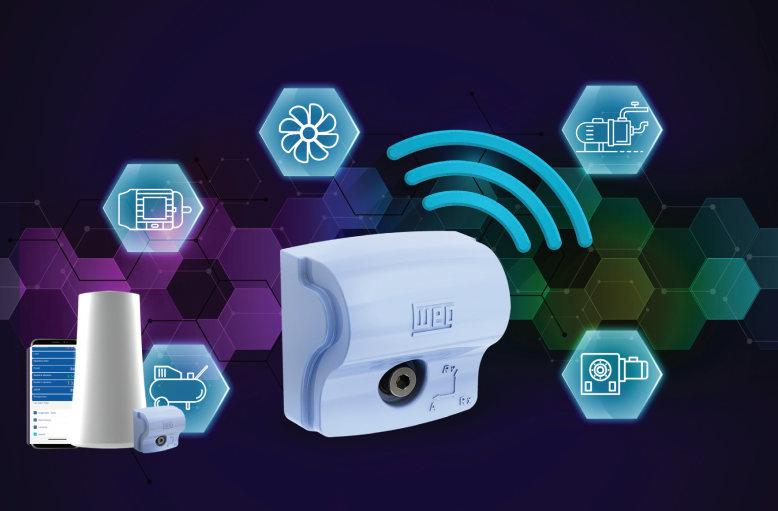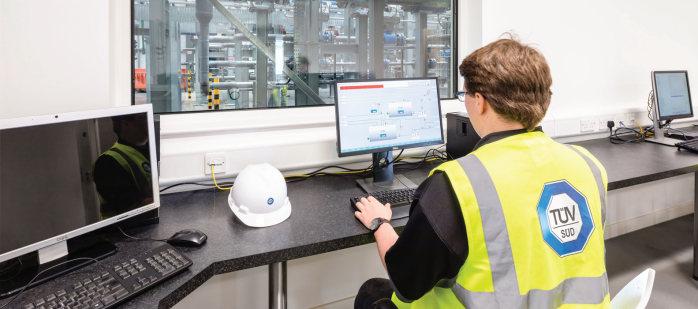
13 minute read
Is Iraq’s flaring burning out?
Iraq’s flaring finally burning out?
A recent surge of government and private initiatives to increase gas production could see Iraq finally tackle its continued issues with flaring. Robert Daniels reports.
Flaring releases millions of tonnes of GHGs into the atmosphere each year.
ACOUNTRY ENDOWED with reserves of around 145bn bbl of oil and 3,714bn cu m of natural gas (according to OPEC data) should be positioned as a dominant economic force in the Middle East capable of using its oil wealth not only as the foundation of its economy but even, as many other countries in the region have done, to expand into other energy markets. But for Iraq, years of political disruption has left its energy sector flagging far behind neighbouring polities with Iraqi citizens still frequently experiencing power shortages despite the abundance of their natural resources. No single issue more readily demonstrates this inadequacy than flaring.
Once an industry norm, the flaring of natural gas produced by oil extraction is now subject to strict regulation as the fight against climate change has gained momentum. The process annually releases millions of tonnes of CO2 into the atmosphere alongside methane emissions and other greenhouse gases (GHG) such as nitrogen oxide. Additionally, with the advance of new technology, it represents an enormous commercial waste with Iraq spending billions to import natural gas from Iran to support its energy demand (it was given special consideration to continue doing this despite the Iranian trade embargo).
In 2018 the IEA reported Iraq in the top four countries in the world for flaring (alongside Iran, Russia and Algeria) and, according to the Washington Institute for Near East Policy, the country burns off through flaring an estimated U$S2.5bn per year - an agonising statistic for a country relying on its neighbours for its gas. Restricted by years of disruption the state has not been able to implement the gas infrastructure needed to reduce flaring and fully take advantage of this
enormous potential source of revenue, but it appears the years of waste could finally be coming to an end.
Change in the air?
Perhaps prompted by the economic squeeze caused by the COVID-19 pandemic and the realisation that global customers are now seriously invested in reducing their carbon footprint, in October 2020 the Iraqi government formally adopted the White Paper for Economic Reform to develop a diversified and dynamic economy. As part of this, the government vowed to establish a natural gas national company, expand gas infrastructure, establish a regulated framework to encourage more international private investment and ultimately end its reliance on imported gas. The country is also a member of the World Bank’s Zero Routine Flaring by 2030 initiative and the Oil Minister of Iraq, Ihsan Ismaeel speculated that gas flaring in the country could be ended in 2025.
While this is not the first time Iraq has come out with such ambitious ideas (the government has previously stated its intentions to reduce flaring in the past with nothing materialising, and Ismaeel’s 2025 date was itself an extension of a target originally set for 2022) there does now seem to be some genuine movement in this field.
Baker Hughes has confirmed that it was awarded a major contract by the South Gas Company (SGC) of Iraq in Q4 2020 to design, manufacture, deliver, construct and commission an integrated facility for the processing and production of natural gas with a capacity of 200mn cu ft of natural gas per day. It will also reportedly use previously flared natural gas from the Nassiriya and Gharraf oilfields which will reduce emissions by an estimated 6mn t of C02 annually.
Meanwhile, in the Kurdistan Region of Iraq (KRI), DNO Norway launched its Peshkabir Gas Capture and Injection Project in its Tawke licence in mid-2020, which had already captured 1bn cu ft of gas injection by September and reduced flaring at the Peshkabir field by more than 75%. The company have just expanded their operations in the KRI with the acquisition of Baeshiqa licence which could herald in future gas capture projects, given the companies clear commitment to this cause.
Additionally, Dana Gas announced that at the end of 2020 it reached a new record of 430MMscf/d of production sales for Pearl Petroleum’s Khor Mor Gas Plant in the KRI and reported that it has restarted the expansion plans in the region (including a 250MMscf/gas processing train expected in Q1 2023) following a pandemicrelated suspension.
These ventures now rank alongside established projects such as the Basrah Gas Company, a joint venture between Iraq’s South Gas Company, Shell, Mitsubishi Corporation, which claims to supply 70% of Iraq’s LPG. This enterprise was established in 2013 and continues to develop the sufficient infrastructure (such as pipelines and compressor stations) required to tackle Iraq’s flaring problem.
Only time will tell whether Iraq accomplishes its flaring objectives. But with the global community increasingly focusing on emissions reduction and the need to wean itself off Iranian gas more glaring than ever with the COVID-19 recession, there has never been a more urgent need to do so. n
DNO increases stake in Kurdistan Region’s Baeshiqa license
DNO ASA, THE Norwegian oil and gas operator, has announced the acquisition of ExxonMobil’s 32% interest in the Baeshiqa license in the Kurdistan Region of Iraq, doubling DNO’s operated stake to 64% (80% paying interest), pending government approval.
The company plans to continue an exploration and appraisal programme on the license while fast tracking early production from existing wells in 2021.
DNO has already demonstrated proof of concept of producing through temporary test facilities, having delivered 15,000 barrels of 40o API oil and 22o API oil for export from the Baeshiqa-2 and Zartik-1 wells, respectively.
In November 2019, DNO issued a notice of discovery on the Baeshiqa license after flowing hydrocarbons from several Jurassic and Triassic zones to surface in the 3,204m (2,549m TVDSS) Baeshiqa-2 exploration well. Following acid stimulation, the zone flowed variable rates of light oil and sour gas. Two zones flowed naturally at rates averaging over 3,000 bopd of light gravity oil each and another averaged over 1,000 bopd also of light gravity oil. Subsequent analyses on surface samples collected during testing confirm that the Triassic reservoirs contain saturated oil with a gas cap.
An exploration well was completed in 2020 on a second structure (Zartik), some 15km southeast of the Baeshiqa-2 discovery well. The 3,021m well tested hydrocarbons to surface from several Jurassic zones, with the uppermost zone flowing naturally at rates averaging over 2,000 bopd of medium gravity oil.
“By increasing our stake in the Baeshiqa license now, we demonstrate our belief in its ultimate potential,” said Bijan MossavarRahmani, DNO's executive chairman. “Following the stabilisation of oil prices and export payments in Kurdistan, DNO is stepping up spending on new opportunities,” he added.
DNO acquired its first 32% interest from ExxonMobil and assumed operatorship of the Baeshiqa license in 2018.
The 324 sq km license is situated 60 km west of Erbil and 20km east of Mosul. The license contains two large structures, Baeshiqa and Zartik, which have multiple independent stacked target reservoir systems, including in the Cretaceous, Jurassic and Triassic. The remaining partners in the license include TEC with a 20% paying (16% net) interest and the Kurdistan Regional Government with a 20% carried interest.

Subsequent analyses on surface samples collected during testing confirm that the Triassic reservoirs contain saturated oil with a gas cap.
The potential of AI in
motors and drives
Marek Lukaszczyk, European and Middle East marketing manager at motor and drive manufacturer WEG, says the potential of artificial intelligence (AI) in electric motor and drive applications could soon be unleashed.
AI, A TERM which was originally coined by American academic John McCarthy in 1956, involves creating algorithms and programmes that allow computers to follow hundreds of millions of instructions – thanks to significant improvements in data-processing power and the advent of big data.
In fact, AI is now a key component in today’s manufacturing plants. Advanced machine learning has allowed computers to solve problems without needing to follow a comprehensive list of instructions. This allows powerful programmes, which are based on neural networks, to be trained to perform specific tasks, carrying huge potential for motor and drive applications.

Motion control
Design engineers want to introduce the power of AI to motors, for advanced motion control. For example, embedded algorithms could be used, based on information provided by intelligent sensors, to alleviate some common motor performance limitations.
Essentially, these systems compare a data-based model of motor performance with real time analytics to correct performance issues with voltage commands, generating torque when phase faults arise. The goal of these systems is to minimise the impact from phase faults, making them more manageable, especially in critical safety situations.
Additionally, these motors can boost motion control performance by improving efficiency, uptime and energy consumption. By using WEG’s motor scan, the performance of electric motors can be monitored with sensors, which facilitates predictive maintenance. Once installed onto the motor, WEG’s motor scan technology uses these sensors to send data to the cloud for analysis, alerting operators to suboptimal data trends.
What the future holds
In the past, technology was simply too expensive to measure the temperatures in an electric motor. Since then, however, sensors have developed and become much more accessible. For example, thermal protection is achieved by monitoring the temperature of the motor windings. By using Positive Temperature Coefficient (PTC) sensors, thermistors can be installed into the motor windings to protect the motor against lockedrotor conditions, continuous overload and high ambient temperature.
Going forward, scientists from the Department of Power Electronics and Electrical Drive Technology at the University of Paderborn aim to develop software capable of estimating the temperatures at certain points. As part of the project, funded by the German Research Foundation (DFG), researchers are using AI and machine learning to find new models for estimating the temperature in drives and other power engineering applications.
This involves training their software, with a software testing method that examines the functionality of an application without peering into its internal structures, and test-bench measurements, to obtain precise temperature readings.
Alan Turing's research proved that a digital computer could simulate the behaviour of any other digital machine, which has led to digital manufacturing as we know it. AI holds huge potential, especially for electric motor and drive applications, but research still has some way to go. n
The performance of electric motors can be monitored with sensors, facilitating predictive maintenance.
ABB urges greater adoption of high-efficiency motors and drives
IN A NEW whitepaper, ABB reveals the potential for significant energy efficiency improvements in industry and infrastructure enabled by the latest and most high-efficiency motors and variable speed drives. ABB calls on governments and industry to accelerate adoption of the technology to help combat climate change.
Electric motors - and the variable speed drives which optimise their operation – power a vast range of applications from industrial pumps, fans and conveyors for manufacturing and propulsion systems for transportation to compressors for electrical appliances and heating, ventilation and air conditioning systems in buildings.
Motor and drive technologies have seen exceptionally rapid advancement in the past decade, with today’s innovative designs delivering remarkable energy efficiencies. However, a significant number of industrial electric motor-driven systems in operation today – in the region of 300 million globally – are inefficient or consume much more power than required, resulting in monumental energy wastage.
Independent research estimates that if these systems were replaced with optimised, high-efficiency equipment, the gains to be realised could reduce global electricity consumption by up to 10%. In turn, this would account for more than 40% of the reduction in greenhouse gas emissions needed to meet the 2040 climate goals established by the Paris Agreement.
“Industrial energy efficiency, more than any other challenge, has the single greatest capacity for combatting the climate emergency. It is essentially the world’s invisible climate solution,” said Morten Wierod, president ABB Motion.
“The importance of transitioning industries and infrastructure to these highly energy efficient drives and motors to play their part in a more sustainable society cannot be overstated,” continued Wierod. “With 45% of the world’s electricity used to power electric motors in buildings and industrial applications, investment in upgrading them will yield outsized rewards in terms of efficiency.”
By 2023, it is estimated that ABB motors and drives will enable customers globally to save an additional 78 terawatt-hours of electricity per year.
Regulatory policies are among the main drivers of industrial investment in energy efficiency around the globe. While the European Union will be implementing its Ecodesign Regulation (EU 2019/1781) this year, which sets out stringent new requirements for an expanding range of energy efficient motors, many countries have yet to take action.
To take advantage of the tremendous opportunities afforded by energy efficient drives and motors to reduce greenhouse gas emissions, ABB says all stakeholders have a critical role to play: • Public decision makers and government regulators need to incentivise their rapid adoption, • Businesses, cities, and countries need to be aware of both the cost savings and environmental advantages and be willing to make the investment, and • Investors need to reallocate capital towards companies better prepared to address the climate risk.
“All stakeholders need to work together to bring about a holistic transformation in how we use energy. By acting and innovating together, we can keep critical services up and running while saving energy and combatting climate change, ”concluded Wierod.
ABB’s white paper “Achieving the Paris Agreement: The Vital Role of High-Efficiency Motors and Drives in Reducing Energy Consumption” can be downloaded at https://www.energyefficiencymovement.com/en/whitepaper/
TÜV SÜD data analytics service to minimise operating costs
TÜV SÜD NATIONAL Engineering Laboratory has launched a data analytics service to help oil and gas operators minimise flow meter downtime and maintenance, significantly lowering operating costs.
The total cost of calibrating an offshore flow meter is estimated to be in the region of US$50,000 or more, once all costs incurred are accounted for. Traditionally, irrespective of whether a flow meter is deviating from its required operating parameters it will be routinely scheduled for recalibration and operations stopped unnecessarily. The new data analytics service will enable operators to move away from this time-based calibration approach to condition-based calibration, by using statistical modelling techniques to predict meter performance based on live and historical data. In addition, diagnostics information can be used to understand what may be negatively impacting a meter by analysing hidden patterns to identify specific fault conditions. This could include incorrect installation, instrument damage, particle deposition, the presence of an unexpected second fluid phase, and upstream or downstream flow disturbance.
Gordon Lindsay, head of digital services at TÜV SÜD National Engineering Laboratory, commented, “Thanks to advances in technology and increased connectivity through the Internet of Things, vast amounts of data exist but only a fraction of its potential benefit is realised. Our new data analytics service uses data in real-time to detect when a meter is not performing to specification and identify the cause of this failure. This means that end-users can avoid shutting down production to remove a device from the pipeline before a solution to a fault can be found.
“Recalibrations are both costly and labour intensive, so proactively determining the optimal calibration date delivers increased measurement confidence, reduced downtime and cost savings,” Lindsay added. Validation of models created by the data analytics service can be conducted in TÜV SÜD National Engineering Laboratory’s accredited calibration facility. This increases end-user confidence in results by reducing any levels of error, assuring them that the problem-solving method suggested by the data analytics service will be effective in the real world.

The new service will help oil and gas operators move away from the traditional time-based calibration of flow meters.










